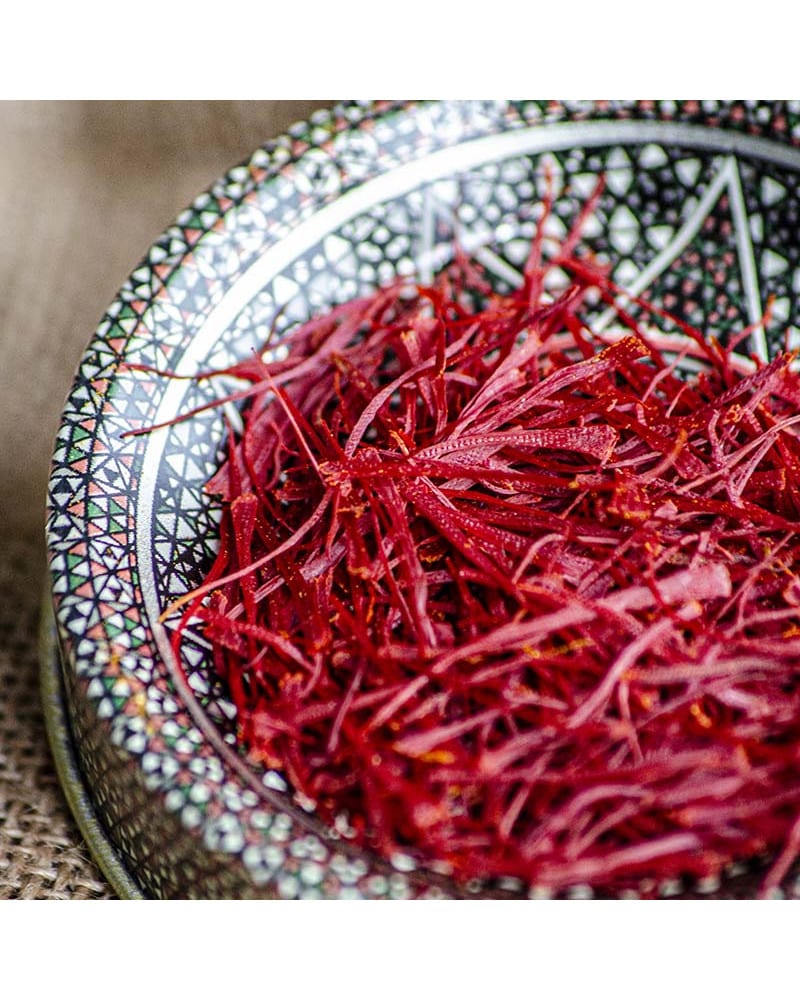Saffron is a spice that comes from the flowers of crocus sativus Linné. The crocus grows in the Middle East and parts of Europe. It’s most commonly cultivated in Iran, India, and Greece.
It only flowers for about three to four weeks during October and November. The flower produces dark red stigmas, also called threads, which are removed carefully by hand and dried. These are considered to be the saffron spice.
Saffron has also been used for culinary purposes to add color and flavor to foods, as a fabric dye, and a perfume ingredient. Like many other herbs and spices, saffron can be prepared as a tea.
Today, saffron still holds a high value as both a spice used for cooking and an alternative treatment for various health conditions. Some studies have shown the spice to be effective for a variety of uses.
Read on to learn more about its health benefits and how to make saffron tea.
What is the history of saffron?
The crocus saffron grows to 20 to 30 centimeters (cm). It takes three years from the time they’re planted as seeds for the crocus to produce flowers. Each plant makes about three to four flowers, and each flower has about three stigmas.
Saffron is one of the most expensive spices in the world because it must be harvested by hand. It also takes a large quantity of blossoms and dried stigmas to make 1 kilogram (kg) of the spice.
The spice has a long history. It’s believed that humans used saffron as early as 3,500 years ago. Historically, people used it to treat a long list of health conditions, including:
- trouble urinating
- menstrual issues
- eye disorders
- ulcers
- stomach issues
- tumors
- mental disorders
What are the health benefits of saffron tea?
1. Antidepressant
Saffron has been nicknamed the “sunshine spice.” And that’s not just because of its red and sometimes yellow coloring. The spice is believed to have mood-boosting properties. There may be some science behind these claims, too.
One older study in the Journal of EthnopharmacologyTrusted Source found saffron to be as effective as the drug fluoxetine (Prozac) in treating mild to moderate depression.
A review in the Journal of Integrative Medicine examined several studies involving the use of saffron for treatment of depression in adults over 18. Researchers found that saffron did improve symptoms for people with major depressive disorder. This may make the spice a good alternative for people who don’t tolerate antidepressant medications well.
2. Heart health
Saffron has many different chemical components. Some of these may help to reduce blood pressure and provide protection against heart disease.
A reviewTrusted Source of studies done on rats showed that saffron lowered blood pressure. Other research using rabbits found the spice to be effective in lowering cholesterol and triglyceride levels.
One older human study in the Indian Journal of Medical SciencesTrusted Source found that saffron reduced the possibility that bad cholesterol would cause tissue damage. Researchers believe that the antioxidant properties of saffron might have a protective effect when it comes to heart disease.
3. PMS treatment
Premenstrual syndrome (PMS) can cause a variety of uncomfortable symptoms, from mood swings to physical discomforts. Some women are affected more than others. For those who want relief but don’t want to rely on medications, saffron may be a good alternative.
A review in the Journal of Psychosomatic Obstetrics & Gynecology looked at the use of herbal treatments for PMS and the more severe premenstrual dysphoric disorder (PMDD). Both conditions cause discomfort to a woman in the one to two weeks before her period begins. Saffron is listed in the review as being an effective treatment for symptoms.
Another study in the International Journal of Obstetrics & GynaecologyTrusted Source looked at saffron as a treatment for PMS symptoms in women ages 20 to 45. Researchers found that 15 mg of saffron twice daily is effective in relieving PMS symptoms.
4. Boosts memory
Saffron contains two chemicals, crocin and crocetin, which researchers believe may help learning and memory function. One studyTrusted Source published in Phytotherapy Research using mice found that saffron was able to improve learning and memory problems. This promising research shows that saffron may have potential in treating diseases that affect the brain, like Alzheimer’s and Parkinson’s.
5. Cancer prevention
Saffron is rich in both antioxidants and flavonoids. Antioxidants help protect the body from harmful substances. Flavonoids are chemicals found in plants that help the plant protect itself from fungus and disease.
A 2015 review in the Journal of Traditional and Complementary Medicine found that the chemical makeup of saffron may be effective in preventing and treating several different cancers. But researchers point out that more studies involving humans are needed.
Where to buy saffron
When buying saffron, make sure you’re buying from a reputable source. Look for it in a grocery or health food store, or an online carrier with a good reputation. The spice is expensive, so it can often be the target of fraud. To cut costs, manufacturers may mix saffron with other ingredients. This not only dilutes the health benefits, but it can also be harmful.
How to make saffron tea
Saffron tea can be prepared plain, by steeping the threads in hot water. But the spice can have a strong and bitter taste. For this reason, many recipes feature the herb paired a variety of different ways. You can mix it in with tea leaves, or add other herbs and spices.
Recipes can vary, but generally involve boiling water in a saucepan and then adding saffron and other ingredients. Let the saffron steep the way you would let a teabag sit in hot water, for about five to eight minutes. Then remove the threads and enjoy.
This recipe from Eat Beautiful mixes saffron with cardamom and uses either raw milk or coconut milk to give it a richer taste.
You can also enjoy saffron tea cold. An iced tea version from the food blog Ciao Florentina combines saffron with other ingredients like basil, lemon, and honey.
Source: https://www.healthline.com/


